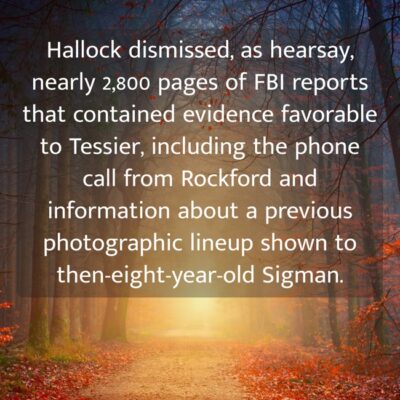Good Friday, all. No one is more qualified to pen this article than my esteemed guest today. Why are we fascinated with cold cases? Stacey Pearson returns to Help From My Friends Friday as she writes about a famous child abduction and murder, the many twists and turns behind it, and the surprising resolution to find justice. ~ Donnell
Our Fascination with Cold Cases
By: Stacey Pearson

Author and Public Safety Expert Stacey Pearson
Maria Ridulph was abducted from the corner of Center Cross Street and Archie Place in Sycamore, Illinois, in the early evening of December 3, 1957. She was seven years old. Neighbors reported hearing a scream. An impromptu search party found Maria’s doll. But she was gone. Maria’s friend, eight-year-old Kathy Sigman, gave police a description of a suspect, a young man who had given the girls piggyback rides and called himself “Johnny.”
When Maria’s decomposed body was found in late April of 1958 in Woodbine, some 120 miles away, the rookie coroner failed to take crime scene photographs. He said he didn’t want pictures of the murdered girl “slobbered all over the front pages.” While it’s natural for some to avert their eyes from tragedy, others are fascinated by it.
High-profile cold cases are memorialized in true crime books and explored on television, the big screen, and small screens—our Nooks, Kindles, and iPads. From missing persons to murder, there’s no shortage of professional and amateur sleuths poking around the evidence and posting their theories on blogs, message boards, and podcasts.
The cold case phenomenon is not unique to the United States. Long-term, unsolved cases capture worldwide fascination. The unknown draws us in. Intrigues us. Some believe our interest in true crime and unsolved mysteries has an evolutionary benefit—enhancing our survival skills by making us more attuned to lurking evil. For others, though, solving cold cases is a way to test their investigative abilities. It’s a way of engaging in intellectual stimulation that is thrilling and rewarding. We’re presented with a puzzle that needs to be solved, and we must use our intelligence, intuition, and logic to unravel the mystery.
The challenge is to reveal the truth, however horrific it may be.
There’s no statute of limitations on murder because intentionally killing another is one of the most heinous crimes a person can commit. Justice for victims and their families can be a lengthy pursuit, so society wants unlimited time to hold violent perpetrators accountable. No matter how many years pass.

Such was the case in the investigation and trial of John Tessier, a.k.a. Jack McCullough.
McCullough changed his name in 1994, but when Maria Ridulph disappeared in 1957, he was eighteen-year-old John Tessier. He lived just two blocks from the Ridulph family and fit Kathy Sigman’s general description of the suspect.
But Tessier had what seemed like an ironclad alibi for the time Maria was kidnapped.
He was miles away in the Rockford/Chicago area, trying to enlist in the Air Force. In fact, he met with recruiters and then placed a collect call from Rockford to his family home, asking his stepfather, Ralph Tessier, for a ride home. After placing the call, recruiters saw him again at the Rockford Post Office.
The Sycamore Police Department and the FBI ruled Tessier out as a suspect. The timeline didn’t fit.
Maria’s case went cold for five decades.
When children are murdered or disappear without a trace, heartbroken families and communities are left in a state of limbo and uncertainty, searching for answers. Despite extensive efforts by law enforcement agencies and concerned citizens, many missing and murdered children cases remain unsolved.
The loss of a child is always devastating, but when justice is not served, familial grief is compounded. Additionally, childhood innocence and vulnerability evoke strong feelings of protectiveness and empathy in others, adding to the emotional weight of the case. Cold cases involving children are especially difficult for those involved—including law enforcement—and the unresolved nature of the cases can make the pain linger for many years.
Law enforcement agencies work tirelessly to solve these cases. Still, the passage of time makes it increasingly difficult to gather evidence and leads. Cold cases are often reopened and reinvestigated as new technology and techniques become available, but there is no guarantee of resolution.
Memories fade. Suspects and witnesses die. Lead detectives retire. Evidence is lost. When children are victimized, entire communities suffer, and those unsolved cases remain painful, nagging injuries. And, for detectives and investigators attached to the cases, sometimes many years afterward, there’s an intense external—and internal—pressure to solve the crime.
In 1994, John Tessier’s mother, Eileen, was on her deathbed, with his sisters, Janet and Mary, by her bedside. Eileen grabbed Janet’s wrist and said, “Those two little girls and the one disappeared. John did it. John did it, and you have to tell someone.”
Janet Tessier honored her mother’s wishes. After Eileen died, Janet called the FBI and the local police department in Sycamore with the information. But Eileen’s words were dismissed as those of a heavily medicated dying woman. After all, John Tessier had an alibi. He passed a polygraph. Fourteen more years passed before Janet reached out to the one agency she hadn’t contacted before—the Illinois State Police.
Two days after sending an e-mail, Janet got a phone call from Special Agent Brion Hanley. Hanley and the other investigators who became involved in Maria’s unsolved case were bulldogs. Once they sank their teeth into a case, they never let go.
Hanley interviewed the Tessier sisters, including Jeanne, who revealed a dark, long-held  secret. She told Hanley that John and her father sexually abused her, and her mother knew about it. Jeanne, only a year old in December 1957, also told Hanley she believed her mother lied to the police when she said John had come home the night Maria disappeared. With Ralph Tessier deceased and unable to answer questions, Kathy Sigman was the only living first-hand witness.
secret. She told Hanley that John and her father sexually abused her, and her mother knew about it. Jeanne, only a year old in December 1957, also told Hanley she believed her mother lied to the police when she said John had come home the night Maria disappeared. With Ralph Tessier deceased and unable to answer questions, Kathy Sigman was the only living first-hand witness.
Hanley presented Sigman, now 61, with a photo lineup, and she identified John Tessier as “Johnny.”
In 2011, the 72-year-old Tessier—now Jack McCullough—was arrested in Seattle, Washington, and returned to Sycamore for a bench trial heard by DeKalb County Circuit Judge James Hallock, a jurist with little experience with murder cases.
Hallock dismissed, as hearsay, nearly 2,800 pages of FBI reports that contained evidence favorable to Tessier, including the phone call from Rockford and information about a previous photographic lineup shown to then-eight-year-old Sigman. In that lineup, Sigman picked out a man who was jailed at the time of Maria’s abduction.
The prosecution’s case largely rested on Sigman’s second photo identification, Tessier’s sisters’ statements about their mother’s deathbed statement, and testimony from a jailhouse informant who claimed Tessier confessed to the crime.
On September 14, 2012, nearly 55 years after Ridulph’s death, Hallock convicted Tessier of abducting and murdering the little girl and sentenced him to life in prison.
However, Maria Ridulph’s cold case did not end there.
Another bulldog, Richard Schmack, watched the entire Tessier trial. Some things never sat right with him. So, when he was elected DeKalb County State’s Attorney in 2015, he commissioned a review of the evidence. One year later, Schmack’s review was complete. And it was scathing.
 Schmack lambasted the investigators’ revised timeline and the prosecution’s blind focus on Tessier in the face of corroborated evidence indicating he was not a viable suspect. He stated a Seattle search warrant was based on “materially incorrect and misleading statements.” He cited the investigators’ failure to report new information about the collect call Tessier made from Rockford. Schmack said the grand jury proceedings included “erroneous and misleading” testimony and called the public defender’s office and the appellate defender’s conduct “ineffective under any rational standard.” Regarding the second photo lineup, he said Kathy Sigman should have never been shown Tessier’s picture, based on what was known. Finally, Schmack criticized the prosecution’s use of a jailhouse informant, whose perjury prosecutors knew about and encouraged.
Schmack lambasted the investigators’ revised timeline and the prosecution’s blind focus on Tessier in the face of corroborated evidence indicating he was not a viable suspect. He stated a Seattle search warrant was based on “materially incorrect and misleading statements.” He cited the investigators’ failure to report new information about the collect call Tessier made from Rockford. Schmack said the grand jury proceedings included “erroneous and misleading” testimony and called the public defender’s office and the appellate defender’s conduct “ineffective under any rational standard.” Regarding the second photo lineup, he said Kathy Sigman should have never been shown Tessier’s picture, based on what was known. Finally, Schmack criticized the prosecution’s use of a jailhouse informant, whose perjury prosecutors knew about and encouraged.
After five years in prison, John Tessier’s conviction was vacated, and Schmack dismissed the charges in 2016.
A year later, Judge William Brady granted Tessier a certificate of innocence.
In some novels, the author leaves the reader hanging on the edge of their seat. As the final chapter comes to a close, there is no clear resolution, leaving the reader to form their own conclusions about what might happen next. This ambiguous ending lingers in the reader’s mind long after they have finished the book.
Similar to a novel with an unresolved ending, families and communities suffer ambiguous loss when cases like Maria Ridulph’s remain cold. Unanswered questions and crushing grief haunt families for decades and searching for answers—and peace—becomes a lifelong mission.
The allure of cold cases lies in their ability to spark curiosity, imagination, and a desire for justice. Yet, our fascination with unsolved cases is much more than the satisfaction of solving the mystery or gaining the notoriety, prestige, or political capital that comes with providing closure.
Cold cases tap into our empathy. By delving into these cases, we shine a light on victims and give them a voice. Unsolved cases remind us of the power of perseverance, determination, and compassion in the face of adversity, and they inspire us to never give up in the pursuit of truth and justice.
John Tessier, a.k.a. Jack McCullough, was awarded over $4.7 million in damages for his wrongful conviction. His case is listed on the National Registry of Exonerations.
On the day Richard Schmack dismissed the charges against Tessier in 2016, another suspect was named via an anonymous letter.
Maria Ridulph’s murder has never been solved.
===
About the Author: Stacey Pearson is an AMBER Alert subject matter expert and former public safety professional. She has extensive experience investigating complex cases of missing, abducted, and exploited children, as well as multi-jurisdictional clergy abuse and crimes against children cases. Stacey offers technical advice to authors, novelists, and television and film producers writing on such topics.
Stacey earned her doctorate in law and policy from Northeastern University and now lends her practical and policy expertise to others. To further her personal mission of empowering child safety advocates, she founded The Pelican Project, which supports national child protection programming with a particular focus on missing, abducted, exploited, homeless, and emergency-fostered children and young people in Louisiana.
Stacey lives in Baton Rouge and funds The Pelican Project through outside donations and sales of her fine art photography. She is working on her first novel.
You can follow Stacey on Twitter at @capableguardian, on Instagram at @staceypearsonphotography, and on LinkedIn at: https://www.linkedin.com/in/stacey-pearson-lp-d-432382176/











Stacey, thank you for joining me today. Your knowledge and account of this case is humbling to those of us who write fiction. Talk about twists and turns and the human error that surrounded this case then the human fortitude that fought to make it right. Fascinating, indeed.
Thanks for having me again, Donnell. It’s always a pleasure to be a guest on your blog!
Stacy, thank you for writing about this fascinating case! The work you do for exploited children is invaluable and sacred. Here’s wishing you all the best with your first novel.
Thank you, Margaret!
Thank you for sharing such a heart rending case. A good reminder that twists and turns don’t just exist in crime fiction.
Thank you for reading, Marie!
Stacey, this was both fascinating and frustrating. Thanks for writing about it.
Thanks for reading, Lois.
Thank you so much for writing about this difficult case. I can only imagine how the family and law enforcement feel. Thank you for the work you do and good luck on your novel! I can’t wait to read it!
Thank you, Kathleen … two families were gravely affected by the faulty prosecution. Very complex!
Fascinating. The dedication of the people who work on these cases are amazing. so sad when there is no positive outcome.
Thank you for reading and commenting, Gay 😊
A good recap of a fascinating case and the challenge of cold cases. I followed this one for years, but hadn’t known McCullough had been officially exonerated. He worked as a police officer and security officer in Wash State, and I’ve long wondered if there was evidence of child sexual abuse against him there — those are positions that can give a predator access to potential victims and a cloak of respectability that can protect them.
Yes, Leslie, as a police officer, he was charged with statutory rape of a 15-year-old runaway. After he was terminated, he turned to photography 😳. In 2012, he was also charged with raping Jeanne when she was a teenager, but he was acquitted.
My goodness! This story just keeps growing longer and longer legs!
Donnell
He seemed like the perfect suspect.
Fascinating.
Right? Thanks for reading, Vicki.